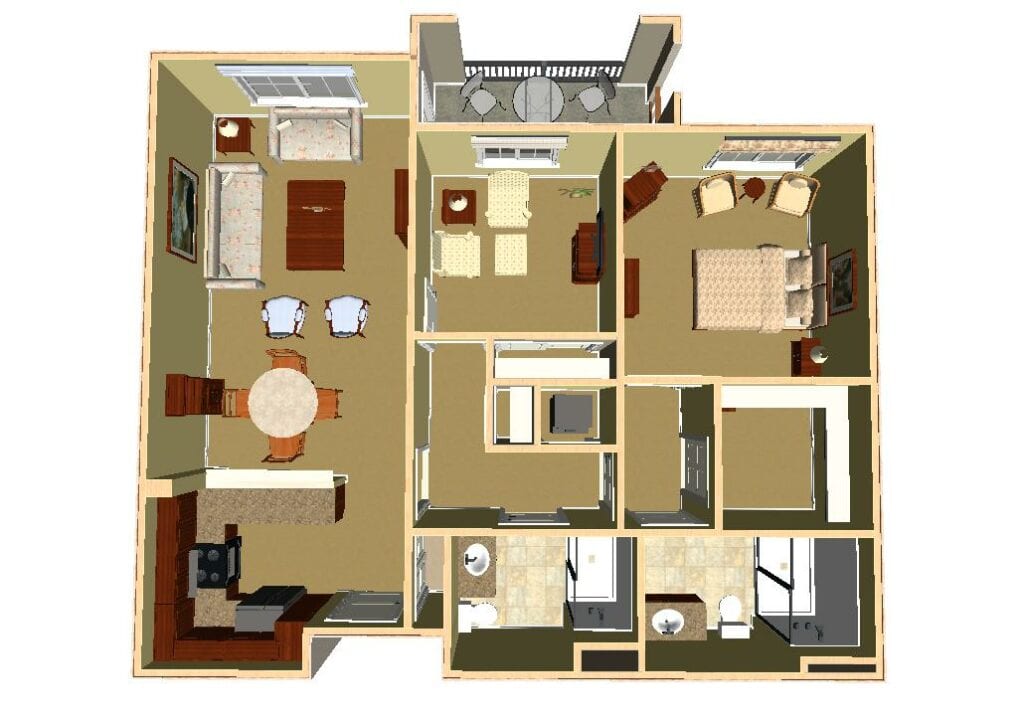6 Ways to Avoid Stress During a Downsizing Move

We are all looking for ways to avoid stress in one aspect of our life or another.
If you, or a loved one, has been considering a downsizing move, the moment those words are uttered, you probably developed an “I’ve just binge-eaten a jar of pickles” look on your face.
Most people physically cringe from the memory of their own downsizing move or a challenging experience a family member had.
As a downsizing specialist who has helped hundreds of clients and their families take on this formidable task, I learned some valuable stress-saving lessons along the way.
If you or a loved one is facing a downsizing move, here are six ways to avoid stress and overwhelm.

1) Avoid Stress by Starting Early. WAY Early!
When I first meet clients at my initial consultation, there’s a good chance that they’ve already bypassed this opportunity to maintain sanity by defaulting to coping mechanism #1: active procrastination.
They always think they have more time than they do. They have the best of intentions, but time slips away. Sometimes it’s because they were surprised by an unanticipated crisis that fast-tracked their move timing, but usually, it just comes down to poor time management.
So, even if you think a downsizing move is years away, now is the time to start the process. If you do, you’ll avoid the overwhelm that comes with waiting to the last minute to tackle all the decision-making that downsizing requires.

2) Avoid Stress by Starting Small.
One of the biggest stress generators during downsizing is the dreaded “Purge Phase”. This is where the rubber hits the road in facing the reality of how much stuff you’ve accrued in your life.
Many clients call me for help because they can’t figure out where to start, let alone how to finish assessing and deciding what they want to take with them or whether items will fit or not.
This is where the beauty of starting months, or even years, ahead of a downsizing deadline can give you the emotional and physical space to tackle bite-size areas, one at a time, and complete them before moving on to the next area. There’s a lot less pressure and you allow yourself time to ease into a transition instead of being catapulted into it.
When I say start small, I mean, one drawer of a dresser, one side of a closet, or one cabinet at a time, not one bedroom or trying to tackle an entire garage all at once.
You’ll feel more in control and less panicked using this strategy, as well as experiencing that great feeling of accomplishment you get as you successfully complete each task.

3) Avoid Stress by Doing Your Research
Often, one of the biggest surprises for downsizers is the realization that items they have invested in, or held onto, over the years either have considerably less value (or worse, no value) than they anticipated in today’s marketplace.
This is a tough one for many people. They were raised in a generation where holding onto things over time generally meant they increased in value. Passing items down to their children was not only expected but appreciated.
But things have changed. There are two things working against them now.
First, new generations have developed different values, tastes, and lifestyles that put more value on uncluttered, minimalist living. They reject the concept of “more” and embrace “less” as more valuable to their well-being and enjoyment, preferring to surround themselves with technology-friendly features and open spaces. If an item doesn’t serve them directly and immediately in function or comfort, they’ll pass.
Second, with the surge of senior population growing every year and the need to downsize to a more manageable lifestyle increases, a glut of furniture and household items has already started to flood the marketplace.
Changing Values and Lifestyles
Too much inventory to choose from means lower values. Many consignment or antique stores now are pickier about what they’ll accept.
That means items like antique furniture, fine rugs, china, crystal, and silver, which have been highly coveted by previous generations, are now worth pennies on the dollar. Younger generations aren’t interested in formal entertaining, the high maintenance of hand washing china and crystal or polishing silver.
So, it’s critical to start your research early on as you go through your purging process to determine what, in fact, has true value in the marketplace.
Start asking the questions now about whether your children, or other family members, have any real interest in taking items at move time, and be prepared to graciously accept no for the answer.
Wikihow.com has a great online guide to finding sources for value on items called “3 Ways to Find Out How Much Something is Worth”.
Check other options including local antique dealers, online auction sites like eBay, or local consignment stores, to see what is currently considered saleable and what isn’t.
Just be sure that, if you use sites like eBay, you’re checking for the “sold” pricing of a given item, not the “for sale” pricing, as the estimate of worth.

4) Avoid Stress by Creating a Space Plan.
Once you’ve picked out a new home, consider getting a quote from a downsizing specialist or a home organizer. They can help you create a “to-scale” space plan for the home you’ll be moving to. It’s worth every penny of the investment and it’ll save you time and stress on move day!
For DIY’ers, there are several free, easy-to-use space plan software programs to choose from. They create accurate three-dimensional floor plans on your desktop computer or tablet. If you aren’t the “techy” type, get a tech-savvy member of the family to help.
Be sure to personally measure the rooms. Never depend on a marketing floor plan dimension that a retirement community hands out for one of their residences. It’s not unusual for subtle (or large) changes to occur during the building phase. This can create extremely unpleasant surprises on move day.
Better Tools Are Available
I’ve offered 3D space planning for years as part of my downsizing practice. It always helped reduce the stress my clients had over how much stuff they could take. To their surprise, they were often able to bring considerably more items than they originally expected.
However, I recommend avoiding the use of pre-made, paper furniture “Pop-outs” kits. They rarely accurately represent the type and size of furniture that an average senior has.
Instead, use a 3D program. It will allow you to create furniture with exact measurements that you can then easily add to, and move around, the floor plan to determine the best layout for your needs.

5) Don’t be afraid to ask for help
Moving of any kind is taxing. But a downsizing move is tough because you have the added aspect of purging and decision-making. It can be challenging to figure out what to get rid of and how to dispose of the rest.
It can make a huge difference in reducing downsizing stress to have some added support in this process, both emotionally and physically.
I’ve frequently heard clients say that even though they knew they needed help, they were afraid to ask for it. They didn’t want to bother their family or their kids lived out of state and couldn’t take time off work. The parent figured since they’d moved before, they could do it again, only to find themselves overwhelmed and exhausted.
Hire a Pro
If help isn’t readily available, hire a local downsizing specialist. They can help you create a plan that meets your unique needs. Even if you don’t, or can’t, use a specialist in all aspects of your move, consider hiring them for the tasks for the most challenging tasks.
Other resources include asking friends, members of your church, or activities club, to help with one or more tasks. Make it fun!

6) Address the “Space Hogs”.
What are the items in your home that take up a LOT of space? Do you have a lot of photos or photo albums? What about books, CD’s or DVD’s? These are two of the top space hogs in any home, and frankly, among the least used.
Be honest. When was the last time you pulled out that photo album from your Caribbean cruise in 1995? Have you re-read any of the books you’ve saved over time like you thought you would?
Consider how to handle these early on. If you’re downsizing to a smaller home, storage space will be at a premium. For each item that you want to bring to your new home, ask yourself this: “where will I be storing or displaying this?”.
Digitizing Saves Space
Consider condensing photos, or photo albums, into digitized form. You can scan any photo and store them on a CD, DVD, or computer. It goes a long way in freeing up storage space. That means you can bring more of your treasured items to your new home.
I know it’s not easy. Many book lover clients of mine found parting with any of their cherished book collections painful. But, once they did, they felt great that they would be used and appreciated. Consider donating to a library, school, retirement community library, reading program, or another worthy benefactor.
Many resources and services are available now for scanning and digitizing photos. You can also find services to restore old, faded photos back to their former glory. It’s truly an answer to a downsizer’s prayer!
A downsizing move doesn’t have to be an unpleasant experience. Create a plan and give yourself adequate time to process what goes and what stays. It’ll save you from a lot of unnecessary stress and strife.
Check out my stories of transformation previous downsizing clients have shared! They found putting the right plan in place helped them avoid stress.
Maybe you need a little help getting a plan in place. Hire a qualified downsizing specialist in your area! They can give you guidance and helpful tips to get you started.
Deborah

